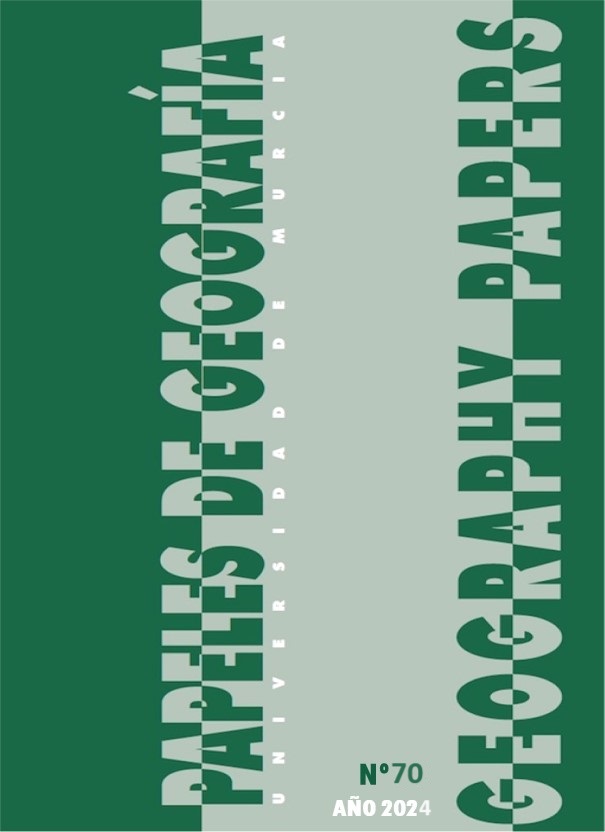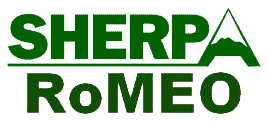GEOLOGICAL, MINING-INDUSTRIAL AND NATURAL HERITAGE IN THE CALATRAVA-CIUDAD REAL VOLCANOES GEOPARK
LANDSCAPES FOR ENVIRONMENTAL EDUCATION AND TOURISM
Supporting Agencies
- Universidad Autónoma de Madrid
- Universidad de Castilla-La Mancha
Abstract
Volcanic heritage is associated with heritage and landscape values that make the territories involved potential laboratories for the development of scientific-educational, tourist and cultural activities. Sometimes, as in the geographical area under study, such volcanic manifestations lack activity, which, from the point of view of their interpretation, makes it difficult to redefine traditional uses, generally of an agricultural and mining nature, to accommodate other types of practices such as those mentioned above. The Calatrava-Ciudad Real Volcanoes Geopark Project is an example of territorial value enhancement and reactivation based on this type of singular resource located in an inland space (Castilla-La Mancha, Spain). The analysis and characterization of the affected territory, delimited by the figure of the Geopark, leads us to the discussion on the suitability of integrating the natural and landscape values of the environment, to consider the geographic diversity as a whole in terms of territorial heritage. In conclusion, the geological, mining-industrial and natural values of the area should not be articulated from its heritage segmentation, but understanding the geographic space as a whole, the landscape according to a global vision, betting on the local, environmental education and cultural tourism in a territorial vision.
Downloads
References
ANCOCHEA, E. (1979): “Polaridades magnéticas y edad de las rocas volcánicas del Campo de Calatrava (Ciudad Real)”. III Asamblea Nac. Geodesia y Geofísica, 1593-1604.
ANCOCHEA, E. (1982): Evolución espacial y temporal del vulcanismo reciente de España Central [Tesis doctoral. Universidad Complutense]. Madrid. Col. Tesis doctorales UCM, 203/83, 675 pp.
ANCOCHEA, E. (1999): “El campo volcánico de Calatrava”. Enseñanza de las Ciencias de la Tierra, v. 7(3), pp. 237-243.
BECERRA-RAMÍREZ, R. (2013): Geomorfología y Geopatrimonio de los volcanes magmáticos de la región volcánica del Campo de Calatrava [Tesis Doctoral. Ciudad Real: Universidad de Castilla-La Mancha]. https://ruidera.uclm.es/xmlui/handle/10578/3606 [consulta: 15 de Marzo de 2024].
BECERRA-RAMÍREZ et al. (2020): “Characterization and geotourist resources of the Campo de Calatrava Volcanic Region (Ciudad Real, Castilla-La Mancha, Spain) to develop a UNESCO Global Geopark Project”. Geoscience, v. 10(11), p. 441. https://doi.org/10.3390/geosciences10110441
BONADONNA, F. P. y VILLA, J. M. (1984): Estudio geocronológico del vulcanismo de Las Higueruelas. I Reunión Est. Reg. Castilla-La Mancha (Albacete).
CAÑIZARES, M. C. (2005): Territorio y patrimonio minero-industrial en Castilla-La Mancha. Cuenca, Universidad de Castilla-La Mancha.
DÓNIZ P. et al. (2010): Volcanes y turismo: patrimonio, atractivo, recurso y producto. Turismo. Escuela Universitaria de Turismo Iriarte, nº 2, p. 73-79.
DUHAMEL, P. (2007): Le tourisme. Acteurs, lieux et enjeux, “Les lieux touristiqes”. En M. Stock (Coord.). París, Belin, pp. 33-82.
ERFUR-COOPER, P. y COOPER, M. (Eds.): (2010). Volcano and geothermal tourism. Sustanible geo-resoruces for leisur and recreation. Earthscan Publications.
ESCOBAR, E. et al. (2017): Patrimonio geológico, gestionando la parte abiótica del patrimonio natural. Cuadernos del Museo Geominero, “Centro de interpretación del volcán Cerro Gordo como ejemplo de dinamización económica en el Campo de Calatrava (Ciudad Real, España)”. En L. Carcavilla et al. (Eds.). Instituto Geológico y Minero de España, Madrid, pp. 467-473.
FERNÁNDEZ-ARROYO, A. (2017): “La puesta en valor del patrimonio natural en relación con los caminos naturales: oportunidad turística para Castilla-La Mancha”. Papeles de Geografía, nº 63, pp. 26-43. https://doi.org/10.6018/geografia/2017/280711
FERNÁNDEZ-ARROYO, A. (2022): Paisajes culturales agrarios en Castilla-La Mancha, “Recursos turísticos vinculados a los paisajes culturales agrarios en Castilla-La Mancha”. En Cañizares, M. C. y Ruiz, Á. R. (Coord.). Aranzadi, Navarra, pp.301-331.
FERNÁNDEZ-ARROYO, A. y MARTÍNEZ, H. S. (2017): “El acceso a los destinos rurales: Una perspectiva para la planificación territorial del turismo en una región de interior (Castilla-La Mancha)”. Cuadernos de Turismo, Nº 40, pp. 251-272. https://doi.org/10.6018/turismo.40.309691
GARCÍA-CANSECO, V. (2000): Parque Nacional de Cabañeros. Biblioteca de Autores Manchegos. Diputación de Ciudad Real. Editorial Ecohábitat.
GARCÍA, J. L. (1995): El medio natural en los Montes de Ciudad Real y el Campo de Calatrava. Biblioteca de Autores Manchegos, Ciudad Real.
GONZÁLEZ, E. et al. (2013): Volcanes. El latido del Campo de Calatrava. Lafarge Cementos, Ciudad Real.
GONZÁLEZ, E. et al. (2010): Aportaciones recientes en volcanología 2005-2008, “El trabajo reciente de los geógrafos en el volcanismo del Campo de Calatrava”. En E. González, et al. (Eds.). Centro de Estudios Calatravos, Ciudad Real.
HERNÁNDEZ, F. (1932): Estudio de la región volcánica central de España. Memorias de la Academia de Ciencias Exactas, Fisicas y Naturales, v. 3, 235 pp.
JCCM (2020). Plan estratégico de turismo de Castilla-La Mancha2020-2023. Retos y objetivos estratégicos. Desarrollo de planes y líneas de actuación. Junta de Comunidades de Castilla-La Mancha. https://www.turismocastillalamancha.es/PLAN-ESTRATEGICO-TURISMO-CASTILLA-LA-MANCHA-2020-2023.pdf [consulta: 10 de Agosto de 2024].
JCCM (2024). Plan estratégico de turismo de Castilla-La Mancha 2024-2030.. Junta de Comunidades de Castilla-La Mancha. https://www.planestrategicoturismoclm.es/ [consulta: 10 de Agosto de 2024].
LEY 42/2007, de 13 de diciembre, del Patrimonio Natural y de la Biodiversidad, 13 de diciembre de 2007. https://www.boe.es/buscar/act.php?id=BOE-A-2007-21490 [consulta: 10 de Febrero de 2024].
LÓPEZ et al. (1993): “Cenozoic intra-plate volcanism related to extensional tectonics at Calatrava, central Iberia”. Journal of the Geological Society, nº 150, pp. 915-922.
MUÑOZ, J. (1976). “Sobre la existencia de encostramientos ferruginosos en la rasa occidental asturiana”. Estudios Geográficos, v. 37(145), pp. 517-520.
PERRUCA, M. y CARAVILLA, L. (Coords.) (2015). Guía turística del Geoparque de la comarca de Molina-Alto Tajo. Asociación de Desarrollo Rural Molina de Aragón-Alto Tajo, Guadalajara.
PILLET, F. (2016): “¿A qué llamamos Patrimonio Territorial como destino turístico?” GeocrítiQ. http://www.geocritiq.com/2016/06/a-que-llamamos-patrimonio-territorial-como-destino-turistico/ [consulta: 15 de Septiembre de 2024].
POBLETE, M. A. (1995): El relieve volcánico del Campo de Calatrava (Ciudad Real). Universidad de Oviedo, Oviedo, pp. 467.
PORTERO, J. M. et al. (1984): Mapa geológico de la Hoja n. 784 (Ciudad Real). Mapa Geológico de España 1:50.000 (Magna). IGME.
RAMÍREZ, J.L., ANCOCHEA, E. y PÉREZ, A. (1984): Mapa geológico de la Hoja n. 785 (Almagro). Mapa Geológico de España 1:50.000 (Magna). IGME.
SIGURDSSON, H. y LOPES, R. (2000): Encyclopedia of volcanoes. “Volcanoes and tourism”. En Sigurdsson, H. et al. Academic Press. San Diego, pp. 1283-1299.
VALENZUELA, M., HIDALGO, C. y PALACIOS, A. (2008): “La valoración turística del patrimonio minero en entornos rurales desfavorecidos: Actores y experiencias”. Cuadernos de Turismo, nº 22, pp. 231-260.
VÁZQUEZ, A. y GONZÁLEZ, E. (2007): Geografía de Castilla-La Mancha. “El relieve”. En Pillet, F. (Coord.). Almud. Ciudad Real, pp. 37-54.
VEGAS, R. RINCÓN CALERO, P.J. (1995): Campos de esfuerzos, deformación alpina y volcanismo neógeno-cuaternario asociado en el antepaís bético de la provincia de Ciudad Real (España central). Sociedad Geológica de España.
- 18-02-2025 (3)
- 06-02-2025 (2)
- 06-02-2025 (1)
Copyright (c) 2025 Geography Papers

This work is licensed under a Creative Commons Attribution-NonCommercial 4.0 International License.
The manuscripts published in Papeles de Geografía are subject to the following terms and conditions:
1. The publishing house of the University of Murcia (Servicio de Publicaciones de la Universidad de Murcia) keeps the copyright of the published manuscripts favouring and allowing the use and distribution of such works under the licence in 2 below.
© Servicio de Publicaciones, Universidad de Murcia, 2011
2. Manuscripts are published electronically under an Attribution Non-Commercial No Derivatives 3.0 Unported Creative Commons Licence Spain (Legal text). Readers are free to copy, use, share and redistribute the material in any medium or format as long as (i) appropriate credit is given to authors and original source (journal, publishing house and URL); (ii) the material is not used for commercial purposes and (iii) this licence and restrictions are stated.
3. Self-archive. Authors are allowed and encouraged to distribute pre-print versions (prior to evaluation) and/or post-print versions (after evaluation and accepted for publication) of their manuscripts. This favours the dissemination and early distribution of scientific knowledge and citing.






